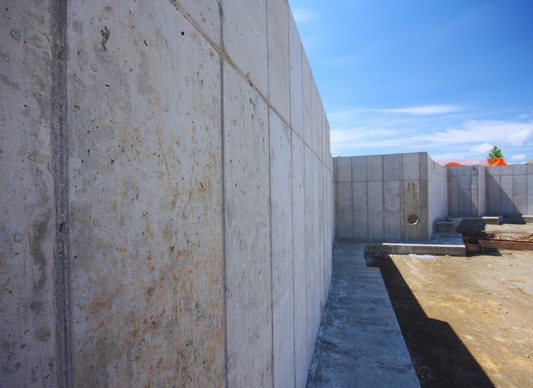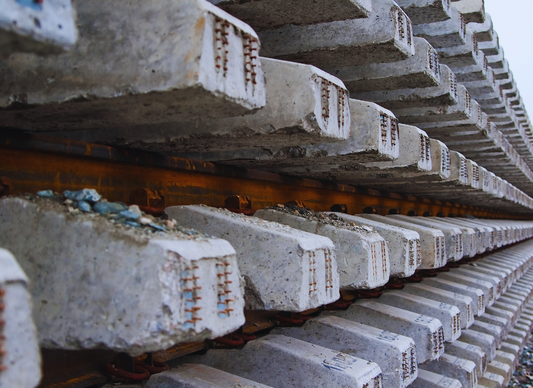Concrete is also one of the hardest, strongest, and most resistant to weather, among other materials you can use in building. It can be used in driveways and patios and in firepits and pool surrounds, and in garden edging and is built to last a lifetime.
However, there are moments when you should change something. Perhaps you are building your own landscape, mending a leaky pipe, or making a pathway or patio smaller. You do not have to excavate and remove a whole concrete structure, but with the correct tools and expertise, you can chop up the sleepers or slabs of concrete.
Concrete cutting may seem like an impossible task; however, it does not have to be. Clean, safe, and efficient cuts can be done with the proper preparation and technique. This guide will take you through the reasons why concrete cutting is required, how to cut concrete safely, and the best tools and tips for cutting concrete sleepers.
Why Would You Need to Cut Concrete?
The initial laying of concrete appears to be irreversible. With time, however, things change, and so do your needs. Concrete cutting could be critical due to several reasons:
Crack control: The concrete dries and shrinks as it ages, creating cracks. Cutting control/ contraction joints will reduce the damage and increase the life of the slab.
Gaining entry to Underground Utilities: Underground pipes, wires, or cables can be easily damaged or need to be replaced. This is achievable by cutting through the slab without having to cut off the whole structure.
Changing the Size and Design: You may not require a large driveway or a large patio anymore. You can also cut to redefine your existing features to your new lifestyle.
Installation of New Features: You may have to employ cutting holes or trenches to accommodate the posts, fencing, or pergolas, among other landscape constructions.
The good thing is that you do not have to destroy everything. Close-cut also consumes less time, money, and materials, and retains the majority of your concrete.
Tools You’ll Need for Cutting Concrete Sleepers
A wet-cutting diamond blade is the best tool to use to cut concrete sleepers. Diamond blades are faster, cut longer, and have cleaner results, unlike normal abrasive blades, which wear easily.
The main options of tools are a few:
Track-guided wet-cutting saws: Good for large or straight cuts. They can often be recruited through equipment suppliers.
Hand-held saws: More versatile and able to perform and work in smaller areas.
Walk-behind saws: This is very useful in scoring or cutting concrete slabs, particularly when accuracy and depth are needed.
The best thing to do in the absence of a wet-cutting saw is to use a normal concrete saw fitted into a GFCI-protected extension cord.
You will require an assistant to guide a jet of water in front of the blade carefully, as you cut in this instance. This cools down the saw and concrete as well as reducing dust.
Preparing to Cut Concrete Sleepers
The actual cut is not as significant as the preparation. The following are steps to start safely:
Mark your cut line. Take a square and go around your sleeper and mark straight and visible chalk lines where you would like to cut.
Gear up. Concrete cutting produces dust, noise, and debris. The use of safety glasses, a dust mask, hearing protection, and durable gloves should always be put on. In the case of working on the ground level, kneepads may help to make the job more comfortable.
Control the dust. Concrete cutting gives off fine dust, which may spread even when water is used. Tape and plastic sheet covering nearby windows and vents.
Have a second person nearby. Any form of cutting is less dangerous and easier in case a person is assisted in controlling water streams, tools, or unforeseen accidents.
Step-by-Step: How to Cut Concrete Sleepers
After you are ready, you need to cut your concrete sleepers clean and safely. Here are the steps:
Start with Shallow Cuts
Don't attempt to drive only once. Take little, shallow strokes--a half inch at a time. This lowers strain on the blade and eliminates overheating.
Keep The Surface Wet
Wetting the cutting region chills the blade and depresses the dust. Preferably, keep a little water trickling on the line cut as you work.
Use a Guide for Accuracy
A length of timber or board straight along your line of chalk. This serves as a guide to the saw, and it will assist you in having a straight-line professional finish.
Let the Blade Cool
Cut within 30-45 seconds and then raise the blade and allow it to cool for one minute. This prolongs the life of the blade and aids in clearing off dust trapped.
Break Through With a Sledgehammer if Needed
If the concrete is too thick to saw, cut as deep as you can, and with a sledgehammer or a chisel, cut through the rest.
Clean and Seal the Cut
Clean after the sleeper has been cut, and remove the dust and debris. Coat the exposed internal steel reinforcement of the concrete with galvanised paint. This prevents rust and avoids the cracking of concrete surrounding the steel that is rusting, thus preventing concrete cancer.
Useful Hints on Sawing Concrete Sleepers
Concrete is a tricky material, even when the right tools are used. Remember the following professional advice:
Hone your blade,e should it grow smooth. When your diamond blade is not cutting, then perhaps the concrete is too soft. Ram through something more difficult (such as a brick) to reveal fresh and sharp edges of the blade.
Check your warranty. Avoiding the warranty of the manufacturer of the sleepers by cutting them is not very rare, hence it is better to verify them first.
Work in small sections. You can always cut a little bit at a time, whereas it takes a lot of effort to make big cuts.
When it is Time to Call the Professionals
Many small to medium-sized jobs can be cut with cutting tools that are available as DIY projects, although there are times when it is practical to bring on board professionals. Should you require a deeper cut than 6-7 inches, or should the work you are required to do contain fussy, delicate cuts, professionals will be capable and properly equipped to do them safely.
Final Thoughts
Cutting concrete sleepers might seem intimidating, but with the right preparation, tools, and safety steps, it’s a task you can tackle successfully. From marking your cut line and gearing up with protective equipment to using a wet-cutting diamond blade for a clean finish, every step matters for both safety and results.
If your project is small and straightforward, DIY cutting can save money and time. But if you’re facing a deeper or more complicated job, don’t hesitate to call in professionals for a flawless outcome.
Concrete is strong and long-lasting, but with the right cut, it can also be flexible enough to match your changing needs.




